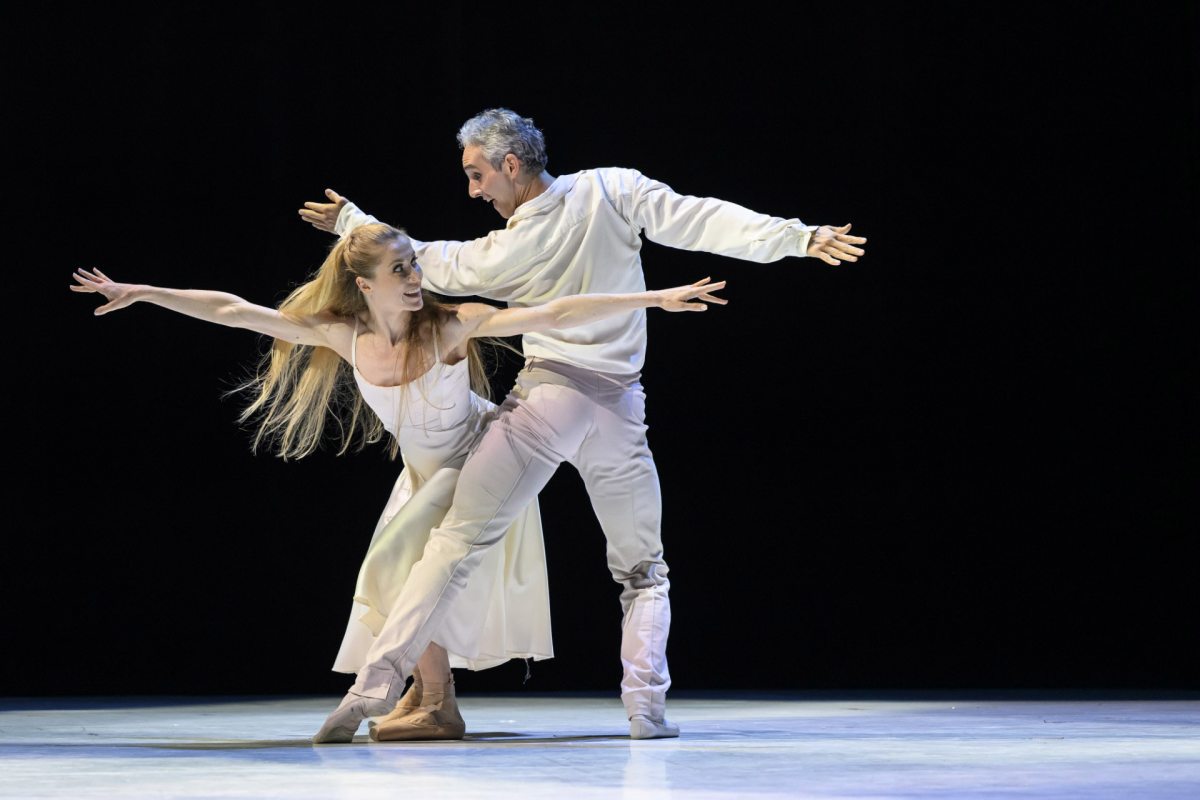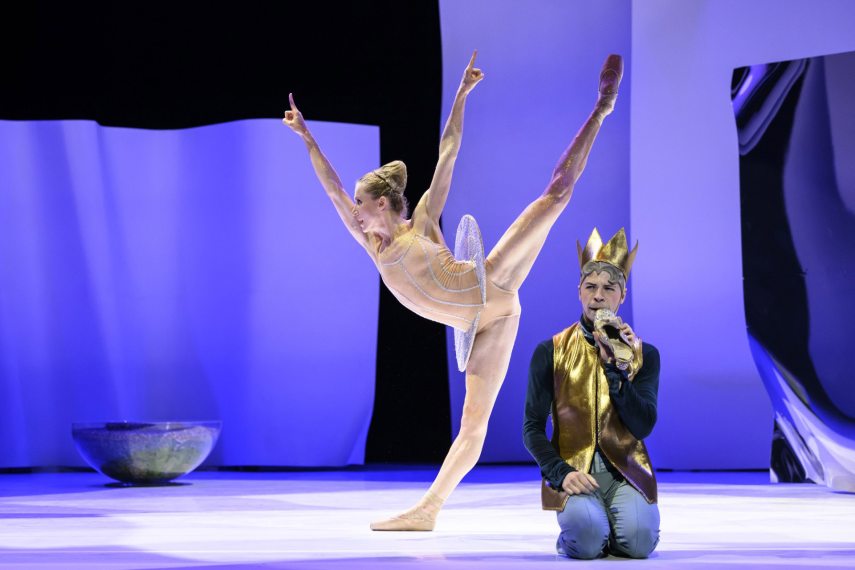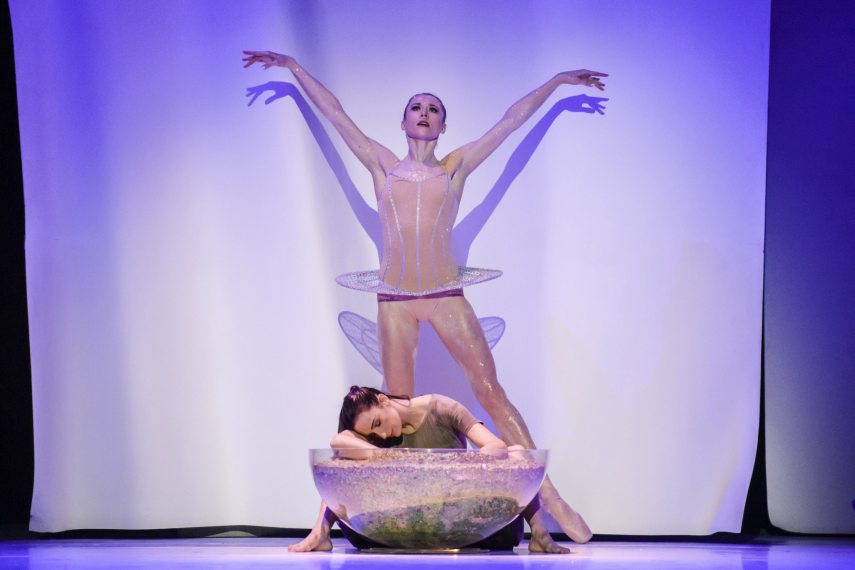
The Hungarian ballerina of the prestigious Les Ballets de Monte-Carlo visits Budapest
Upon being spotted practicing in the rehearsal room, she was swiftly signed by The Royal Swedish Ballet. Years later, after her very first audition, she secured a position with the prestigious Les Ballets de Monte-Carlo. Throughout her remarkable career, Marianna Barabás has toured the globe, and now she returns to Hungary in the role of the Fairy Godmother.
The Fairy Godmother you portray is far from a traditional ballet role.
Being met with such a thunderous ovation at the Erkel Theatre was an unforgettable experience; many of my colleagues had never encountered anything like it before. For me, it was incredible to dance in Budapest again after nearly eight years, especially on the stage where, as a ballet student, I was inspired by countless performances.
Jean-Christophe Maillot, the choreographer-director of our company, has reimagined many iconic classical ballets with his distinctive movement style and innovative interpretations over the past decades. In Cinderella—which we recently performed in Budapest—the role of the Fairy Godmother was originally crafted in 1999 to suit the physique of his former muse and frequent leading dancer, Bernice Coppieters. When I was cast in this role a few years ago, I had the privilege of learning it directly from Bernice, which was immensely helpful, as she has recently been serving as a ballet master with the company. Jean-Christophe and Bernice jointly lead the rehearsals, providing us with invaluable insights firsthand.
It is fascinating how ballet continues to hold such a cherished place in Monaco today. The art form has been an integral part of the principality's cultural life since the early 1900s, largely due to the influence of the legendary Sergei Diaghilev. Jean-Christophe Maillot has been at the helm of the company since 1993, and under his leadership, it has become one of Monaco's cultural hallmarks. We spend roughly half of our season in Monte Carlo, and during the rest of the year, we tour the world. Princess Caroline, the company’s patron, frequently joins us on these tours.
How would you describe the character of the Fairy Godmother as envisioned by Jean-Christophe Maillot?
I have been performing this role for many years, and it is very dear to me. Jean-Christophe's interpretation of Cinderella is unique, in part, because it deviates from the typical stage adaptation of the Grimm fairy tale and resonates more with adults than with children. It explores how people who are meaningful to us can profoundly impact our lives, shaping our present and future, even if they are no longer with us physically.
Maillot masterfully blended the personas of the good fairy and the deceased mother into a dazzling, shimmering, and magical character, whose influence ultimately helps Cinderella escape from her dreadful life. My role is not that of a traditional fairy; rather, I portray an ethereal woman with an array of eccentric qualities: she is kind yet playful, understanding yet often angry.
What is it like to dance as a ballerina of such a prestigious company?
My first experience working with Jean-Christophe was with the Royal Swedish Ballet, where he was teaching his piece Altro Canto in Stockholm. From that moment, I was profoundly impressed by his distinctive style. The energy and passion he infused into the rehearsal room were truly mesmerizing. Following a successful audition in 2015, he brought me on as a soloist in Monaco, and this season marks my ninth with the company.
Your story sounds like a fairy tale come true.
Monaco is truly an extraordinary place: a uniquely rich, beautiful, and tranquil city-state. Living by the sea is a special experience, and it’s hard to imagine a more picturesque setting. The climate is delightful, and the company is incredibly inspiring. We rehearse in a state-of-the-art studio, and our performances are held at two remarkable venues: the Opéra Garnier in the casino building and the Grimaldi Forum, carved into the cliffs beneath the sea. Both venues provide an incredible stage experience. However, we are primarily a touring company, with about two-thirds of our performances taking place outside of Monaco. Jean-Christophe has integrated the company into the global ballet scene, and since joining, we've toured every continent and performed in almost every major theater, from the Bolshoi in Moscow to the New York City Center. Performing in such exceptional locations is a rare privilege, and I am profoundly grateful for these opportunities.
After graduating from the Hungarian Ballet Institute, you began your career at the Hungarian Sate Opera, but only spent half a season there.
At that time, my partner was dancing in Stockholm, and during a visit, I had the opportunity to rehearse with the Royal Swedish Ballet. The company's director noticed me and offered a contract on the spot, despite it being mid-season. At twenty, I felt it was an opportunity I couldn't miss, so I accepted. That’s how I ended up abroad—it wasn’t something I had planned; it just happened.
Like many of the major European ballet companies, the Royal Swedish Ballet predominantly features a classical repertoire. Over my eight years there, I advanced through the professional ranks, performing roles such as the Lilac Fairy in Marcia Haydée’s Sleeping Beauty and taking part in a world premiere by Mats Ek.
Do you ever feel homesick?
In Europe, distances are relatively short, and with a flight of just two to three hours, you can be in Hungary from almost anywhere. My mother is Russian, and my father is Hungarian. They met and married abroad. Like my two sisters, I was born in Siberia, and we moved to Hungary when I was in kindergarten. I’ve grown accustomed to living abroad, and fortunately, I’m able to see my family and close friends frequently.
What does it take to build an internationally renowned dancing career?
It demands a multitude of factors. Years of relentless hard work, intelligence, and significant sacrifices are essential, along with the right timing. Success requires not only technical prowess but also a bit of luck—such as avoiding injury at pivotal moments and connecting with the right people who can provide opportunities. Earning their trust is also crucial. An international career also necessitates stepping out of your comfort zone, overcoming homesickness, and learning to build relationships and friendships while adapting to feeling well in almost any environment.
The performance represents the pinnacle, the culmination of our hard work and dedication—it’s the moment of catharsis. Yet, for me, the journey and the rehearsal process are even more fulfilling.
Working with choreographers and ballet masters of such high caliber as Jean-Christophe and Bernice is invaluable. It is through their guidance that my most intricate roles come to life, and these moments are the most treasured of my career. I wouldn’t want to dance with any other company; Monaco is the perfect place for me. Here, I have achieved both artistic and personal fulfillment.
Photos: Alice Blangero

